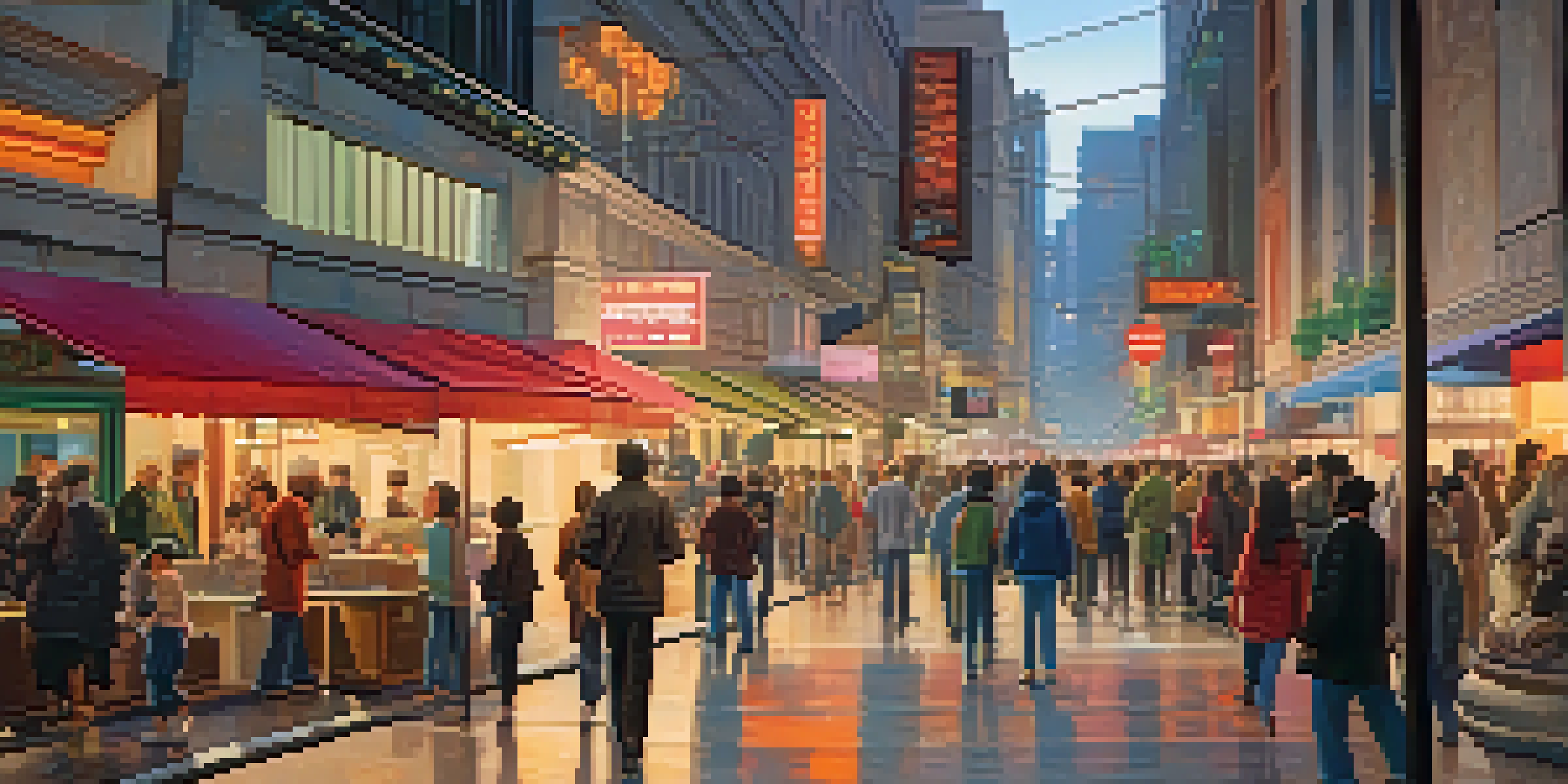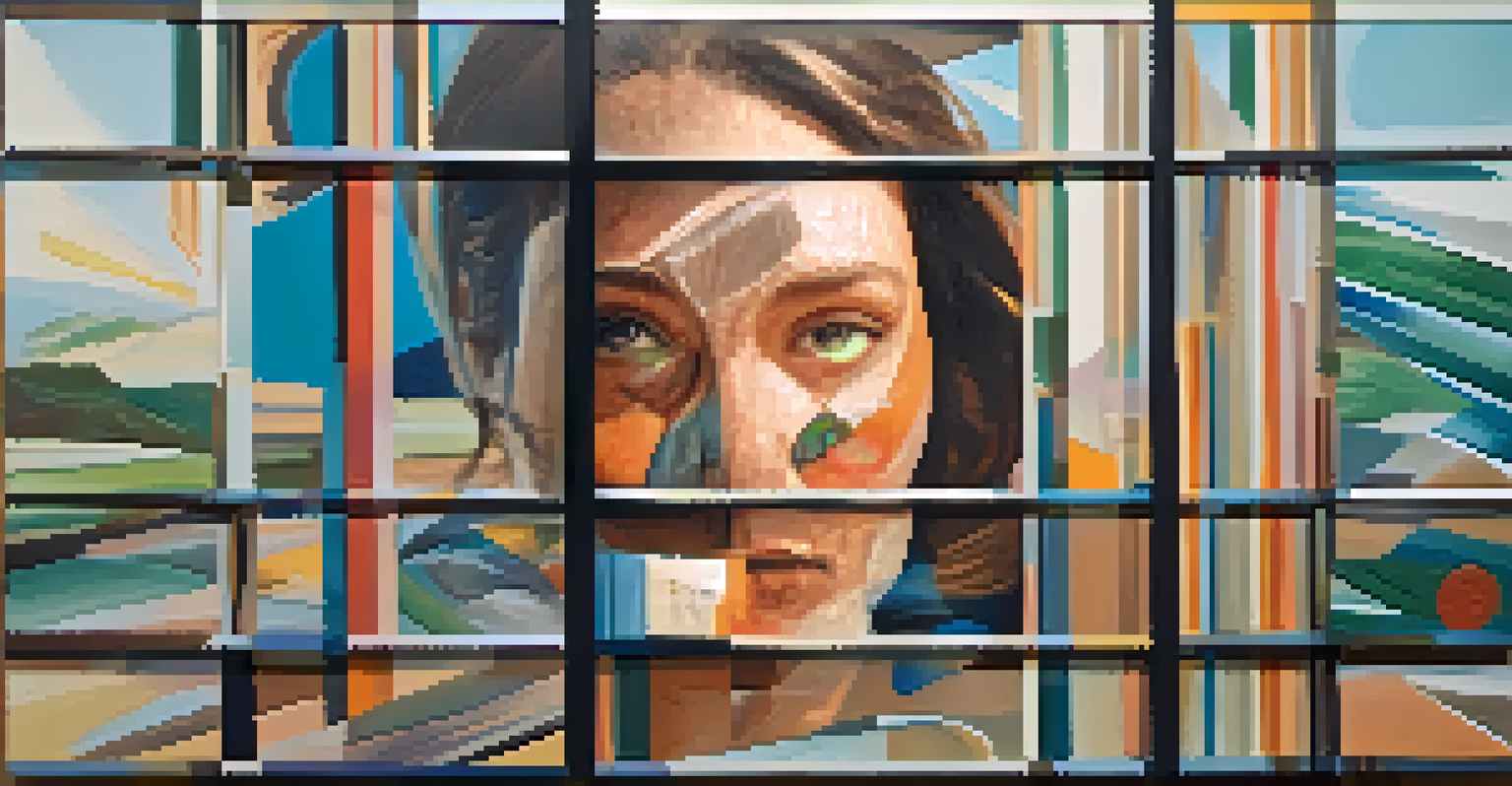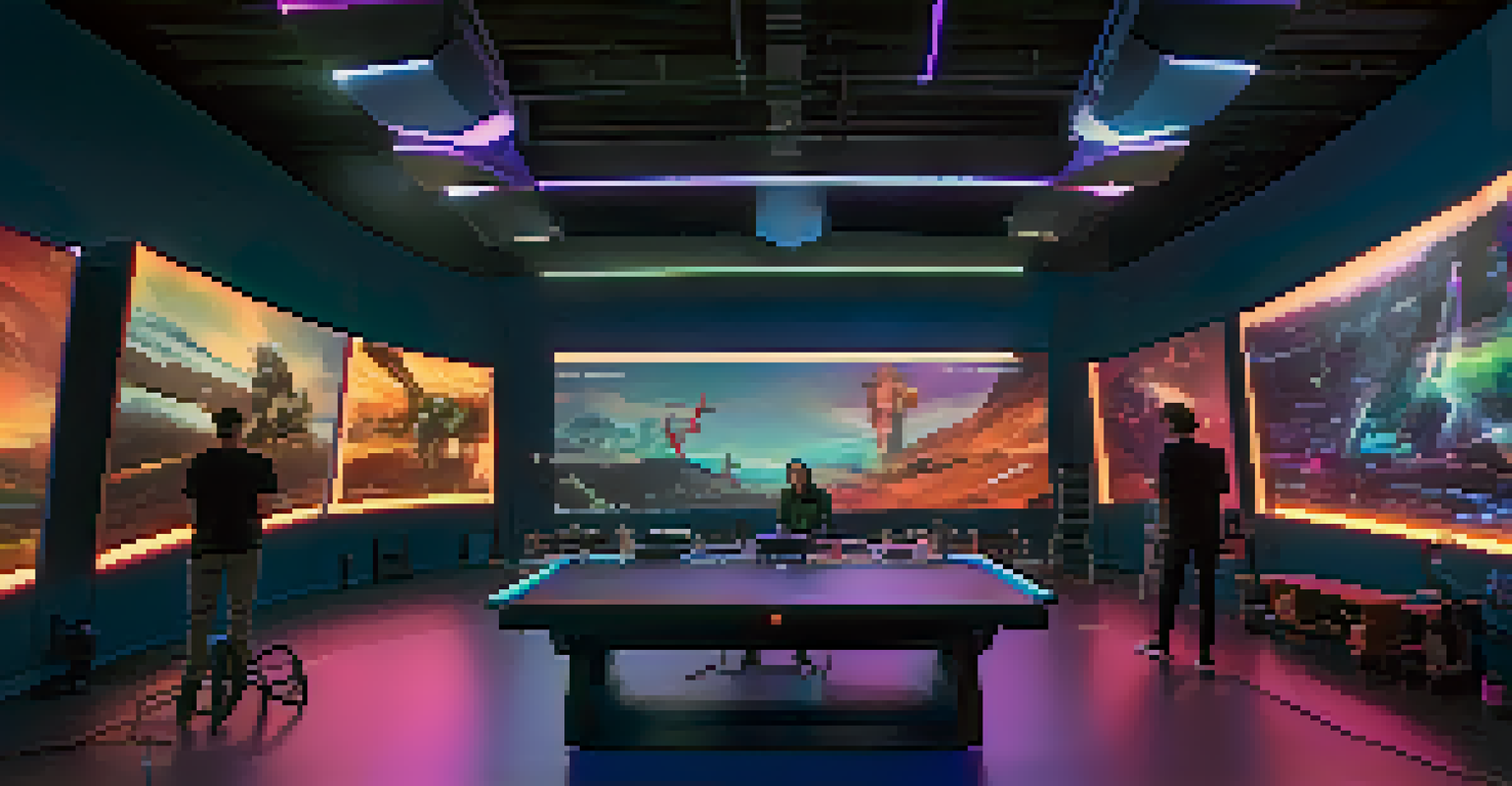The Psychology of Continuity Editing in Audience Perception

What is Continuity Editing and Why Does It Matter?
Continuity editing is a filmmaking technique designed to create a seamless flow of action and maintain a sense of spatial and temporal consistency. By ensuring that the audience can easily follow the narrative, filmmakers help to immerse viewers in the story. This approach reduces distractions, allowing for deeper emotional engagement with the characters and plot.
Continuity editing is the invisible art of film that creates a seamless narrative flow, allowing viewers to become fully immersed in the story.
Imagine reading a story where the timeline jumps erratically; it would be jarring and confusing. Similarly, continuity editing helps to avoid such disorientation in film. By creating a logical sequence, it establishes a visual grammar that audiences have come to understand intuitively, making it an essential tool in storytelling.
Ultimately, continuity editing is about crafting an experience that feels natural and coherent. This technique not only aids in narrative clarity but also enhances the overall impact of the film, making it vital for filmmakers to master.
The Role of Psychological Factors in Editing Choices
Psychological principles play a crucial role in how continuity editing affects audience perception. For example, the Gestalt principles of perception suggest that people tend to organize visual elements into groups or unified wholes. This means that when editing is done well, audiences naturally perceive the connections between different scenes, enhancing their understanding of the story.

Emotional responses are also influenced by editing choices. By using techniques like match cuts or shot-reverse-shot, filmmakers can evoke feelings of tension, empathy, or surprise, depending on the context. These emotional cues guide the audience's reactions, making continuity editing a powerful tool for shaping viewer experiences.
Continuity Editing Enhances Clarity
Continuity editing creates a seamless flow of action, helping audiences easily follow the narrative and engage emotionally with the story.
In essence, the psychology behind continuity editing is about tapping into how our brains process information. By understanding these psychological principles, filmmakers can create more engaging and emotionally resonant narratives.
Creating a Sense of Time and Space with Editing
One of the primary goals of continuity editing is to establish a clear sense of time and space within a film. Techniques such as establishing shots or the 180-degree rule help viewers orient themselves within the story world. This spatial clarity is vital, as it allows the audience to feel grounded in the narrative.
Editing is not just about putting together shots; it's about creating an experience for the audience that resonates emotionally and intellectually.
For instance, consider a scene that transitions from a busy street to a quiet room. Effective continuity editing will make these shifts feel natural, guiding the audience through the change without feeling disoriented. This seamless movement enhances immersion, allowing viewers to fully engage with the characters and their journeys.
By skillfully manipulating time and space through editing, filmmakers can create a rich tapestry of experiences that resonate with viewers on multiple levels. This ability to guide perception is what makes continuity editing an indispensable part of the filmmaking process.
How Continuity Editing Influences Audience Emotion
Continuity editing not only clarifies the narrative but also plays a significant role in shaping audience emotions. By carefully selecting which shots to use and how to arrange them, filmmakers can manipulate the emotional tone of a scene. For example, quick cuts might create a sense of urgency, while longer takes can evoke contemplation and sadness.
Moreover, the editing rhythm can impact how viewers connect with characters. A well-timed reaction shot can enhance empathy, allowing audiences to feel what the character is experiencing. This emotional connection is essential for fostering a deeper investment in the story.
Psychology Shapes Viewer Perception
Psychological principles influence how continuity editing affects audience emotions, guiding their reactions and enhancing narrative engagement.
Ultimately, the emotional landscape of a film is intricately woven into its editing choices. Continuity editing becomes a powerful narrative device that not only conveys information but also stirs feelings, enhancing the overall cinematic experience.
The Cultural Impact of Continuity Editing Techniques
The techniques of continuity editing have evolved alongside cultural shifts in storytelling and audience expectations. Different cultures may perceive and interpret editing styles uniquely, influencing how stories are told and received. For instance, while Western cinema often favors continuity editing for clarity, other cultures may embrace more experimental forms that challenge conventional narrative structures.
This cultural lens affects the audience's engagement levels and emotional responses. A film that adheres strictly to continuity editing may resonate deeply with a Western audience, while an audience from a different cultural background might find the same film predictable or unchallenging. Understanding these perspectives can offer filmmakers a broader palette for their storytelling.
In a globalized world, filmmakers must navigate these cultural nuances to connect with diverse audiences. This adaptability in editing choices can enhance a film's reach and impact, making it essential for creators to consider cultural context in their work.
Challenges and Missteps in Continuity Editing
While continuity editing is a powerful tool, it is not without challenges. Missteps in editing can lead to confusion and disrupt the viewer's experience. For example, a sudden change in lighting or costume without explanation can pull the audience out of the narrative, breaking the illusion of reality that films strive to create.
Additionally, over-reliance on continuity editing can stifle creativity. Filmmakers who strictly adhere to traditional techniques may miss opportunities to experiment with more innovative editing styles that could enhance their storytelling. Balancing the conventional with the avant-garde is crucial for creating memorable cinematic experiences.
Cultural Context Influences Techniques
Different cultures interpret continuity editing uniquely, impacting how stories are told and perceived, which filmmakers must consider for broader reach.
Ultimately, understanding the potential pitfalls of continuity editing is essential for filmmakers. By learning from mistakes and embracing a more flexible approach, they can elevate their work and engage audiences more effectively.
Future Trends in Continuity Editing and Audience Engagement
As technology advances, the landscape of continuity editing continues to evolve. With the rise of virtual reality and interactive storytelling, filmmakers are exploring new ways to engage audiences. These innovations challenge traditional notions of continuity and require a reevaluation of how editing techniques are applied.
For instance, in a virtual reality setting, viewers have agency over their perspective, which can complicate the idea of continuity. Filmmakers must consider how to maintain narrative clarity while allowing for a more personalized viewing experience. This shift opens up exciting possibilities for creativity and audience engagement.

Looking ahead, the future of continuity editing may involve a blend of traditional techniques with innovative approaches. As filmmakers experiment with these new formats, audience perceptions and emotional responses will continue to evolve, making it an exciting time for the art of storytelling.